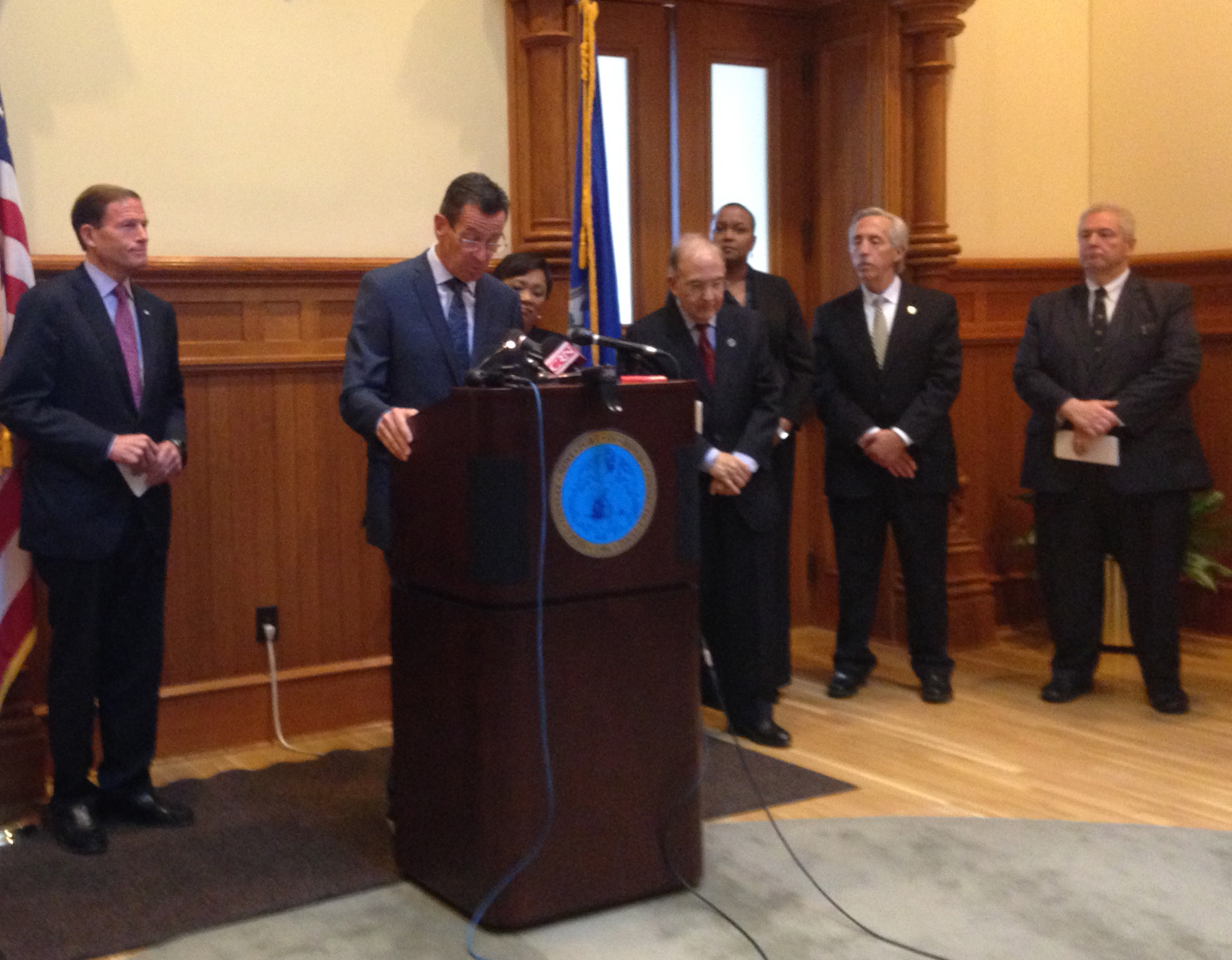
Reform could be on the horizon for bail bonds and judicial policies for low-risk young adult offenders in Connecticut, Gov. Dannel Malloy announced Friday.
Malloy said Connecticut should be the first state in the nation to raise the upper age limit for juvenile sentencing from 17 to 20 at Friday’s Connecticut Law Review symposium on criminal justice reform. He also suggested the state grant young adults between 21 and 25 years old access to some of the protective judicial allowances given to juveniles. This would include allowing young adults to have their cases heard confidentially, their criminal records sealed and the opportunity to have those records expunged. Malloy also suggested that Connecticut follow the example of states like New Jersey and reform bail payments to prevent low-income individuals from being disproportionately impacted by pre-trial jail time.
“We must end a cycle of crime and create the opportunity for success. And we must recognize that what may be trailblazing today may be the norm tomorrow,” Malloy said. “Together, we will continue the work that we began almost five years ago to reduce crime, restore confidence in our criminal justice system and end the injustice of mass incarceration in Connecticut.”
The Connecticut General Assembly passed legislation in 2007 that raised the upper age limit for juvenile sentencing from 16 to 18. This bill came into effect in stages, with 16-year-olds being considered juveniles in 2010 and 17-year-olds joining this group in 2012. Connecticut was one of the last states to raise the minimum age for adult sentencing to 18. But now, Malloy proposes the state be the first to raise this age limit to 20.
Malloy said the 2007 bill has led to the population at the Connecticut Juvenile Training School — a state-run youth prison — decreasing to historic lows. He added that the bill has also resulted in the number of inmates under the age of 18 at the Manson Youth Institution, a high-security prison for men under 21, decreasing by 75 percent since 2009. Malloy said the fact that 51 percent fewer people aged 18–21 are in correctional facilities today as compared to 2009 is the best proof that raising the age for juvenile sentencing is effective.
Professor of child psychiatry at the Yale School of Medicine Steven Marans, who also directs the Childhood Violent Trauma Center — a research center based in the Yale Child Study Center — said though he does not know the details of Malloy’s proposition, it is important to remember young adults’ brains do not complete maturation until mid-adulthood. He said the prefrontal cortex -— which controls functions such as decision-making — does not finish developing until the mid-20s.
“We need to be looking at the individual in the context of what we know about development and about the host of adverse conditions that can derail optimal development,” Marans said.
Marans stressed that discussing the complexity of how humans function and develop when crafting policy ideas is only useful if there is funding for interventions proven effective for at-risk children.
Malloy asked the Connecticut Sentencing Commission to review the state’s bail system and its diversionary programs in a Nov. 5 letter, citing New Jersey, Massachusetts, Kentucky and Oregon as examples of states with fair bail systems.
“Our bail system is broken. It leads to people spending lengthy periods in jail for minor offenses such as drug possession, prostitution and even traffic infractions simply because they can’t afford bail,” David McGuire, legislative and policy director for the American Civil Liberties Union of Connecticut, said. “Meanwhile, people who have committed more serious crimes can get out as long as they can pay.”
Malloy requested an update from the Commission by Jan. 15, 2016.







